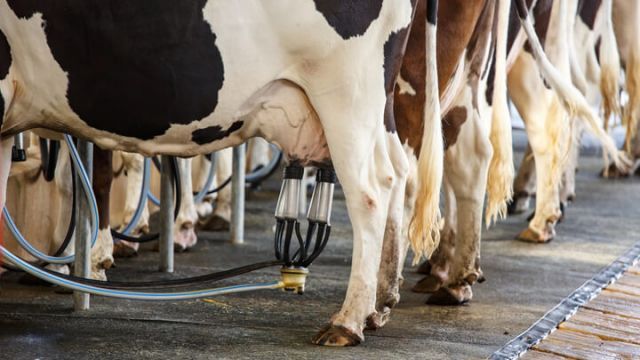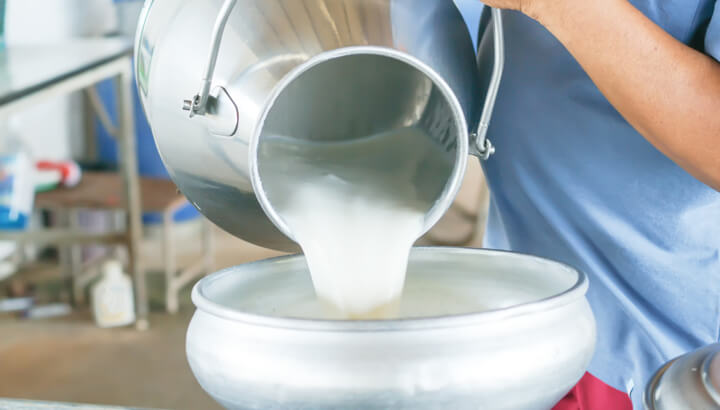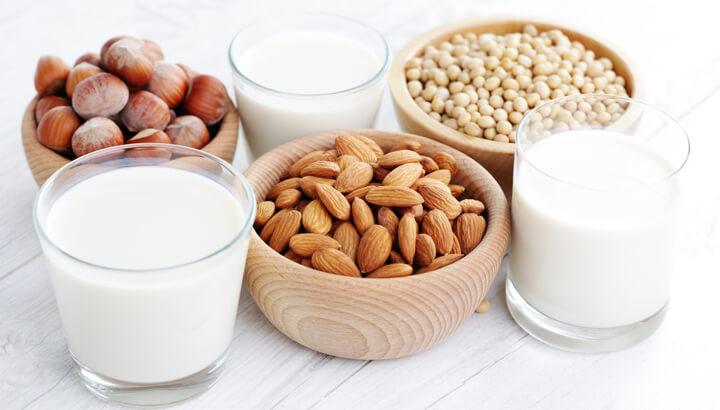
A glass of milk contains some alarming ingredients including hormones, pus and antibiotics. Even if your milk is raw, unpasteurized and organic, with less contamination and processing than regular store-bought milk, it still contains hormones — whether synthetic or natural — intended to boost a calf’s growth, and that can wreak havoc on your body.
All milk contains hormones
You might think that a milk carton that reads “no artificial hormones added” is hormone-free. But all milk, whether raw or pasteurized, naturally contains hormones. Even in Canada, where growth hormones to stimulate milk production in dairy cows is not permitted, natural hormones are still present in milk. Ganmaa Davaasambuu, a physician and a working scientist for Harvard School of Public Health, suggests that the reason for this is that cows are milked almost 300 days per year. And for much of that time, they are pregnant. The further along a cow is, the more hormones appear in her milk.
“Among the routes of human exposure to estrogens, we are mostly concerned about cow’s milk, which contains considerable amounts of female sex hormones,” says Davaasambuu. Dairy accounts for 60 to 80 percent of estrogens consumed according to Davaasambuu.
Vivian Goldschmidt, MA and Save Institute Founder, says that’s not the only hormones you’ll find floating in your glass of milk. You may also find:
- Progesterone (from pregnenolone)
- 5α-pregnan-3β-ol-20-one, 20α- and 20β-dihydroprogesterone (from progesterone)
- Androstenedione
- Insulin
- Testosterone
- Insulin-like growth factors 1 and 2 (IGF-1 and IGF-2)
To keep milk production going strong, dairy cows in the U.S. are routinely injected with a Food and Drug Administration (FDA) approved synthetic hormone that boosts a cow’s milk supply, says Goldschmidt. Apparently, the synthetic hormone rBGH causes an increase in the cow’s levels of insulin-like growth factor, IGF-1. That hormone ends up in our milk. IGF-1 is resistant to pasteurization and even digestion, which means it is readily absorbed into the bloodstream, unchanged. While these hormones are intended to expedite calf growth, they may also expedite cancer cells in humans.
The hormone rBGH has been used in the U.S. since it was approved by the FDA in 1993, but its use is not permitted in the European Union, Canada and other countries according to the American Cancer Society. But a greater concern is that the high levels of IGF-1 in milk may influence the development of certain tumors and the development of prostate, breast, colorectal and other cancers, says the American Cancer Society. But to what extent is somewhat unclear and should be further examined. Breast cancer, in particular, has been linked to consumption of milk and cheese, according to Davaasambuu.
You’re drinking pus

Apparently, a glass of milk contains a lot of pus. Yes, you heard me right… pus. When cows are given synthetic hormones, it makes them susceptible to chronic mastitis, an infection of the udder. The frequency of this infection has allowed the American dairy industry to sell milk with a number of somatic cells or body cells present in milk. If the cow is healthy, then cells are not problematic. But if the cow is infected then cells increase and produce pus — and lots of it.
While pasteurization may deplete most of the harmful bacteria, it doesn’t clean it completely. The industry uses the somatic cell count to indicate the quality of milk because the number of cells increases with bacteria. In fact, the average number of somatic cells present in American milk is 1,120,000 according to Goldschmidt, and most of those are pus.
We are ingesting antibiotics in our milk
The other issue, of course, is antibiotics in milk. Antibiotics are used on many farms to treat mastitis infections. Therefore, cows under antibiotic treatment for mastitis infections may have antibiotic residues in their milk. However, according to Milk Facts, the milk from cows being treated with antibiotics is either discarded or collected into a separate tank. But that doesn’t necessarily mean antibiotics don’t end up in our milk, and when they do, the antibiotics actually accelerate bone loss.
There are pesticides in milk
In addition to hormones and antibiotics, cows ingest toxic pesticides in their food which make it into our milk. According to a 2004 study by the USDA’s Pesticide Data Program (PDP), over 95 percent of the milk samples contained DDE1, a chemical that results from the breakdown of the banned 1970s pesticide DDT. However, despite the ban, DDT is still prevalent in the environment, particularly in soil. The cattle ingest this pesticide when they eat hay, corn and grass.
Alternatives to cow’s milk

Fortunately, there is a variety of non-dairy milk alternatives available on the market, each with a different nutritional profile, flavor, color and texture. While they are not actually “milk” they are extracts derived from plant sources such as nuts, seeds and grains. They can easily replace milk in cereals, coffee and recipes. Dairy milk alternatives include raw almond milk, rice milk, coconut milk, hemp milk, flax and nut milks. Many milk alternatives are fortified with nutrients such as vitamins D and A, similar to cow’s milk.
Dairy doesn’t need to be your only source of calcium. Some alternative “milks” also contain natural calcium or are fortified with calcium. So, before drinking that next glass of milk, ask yourself: are hormones, pus, antibiotics and pesticides really what you want to put in your body?
— Katherine Marko

